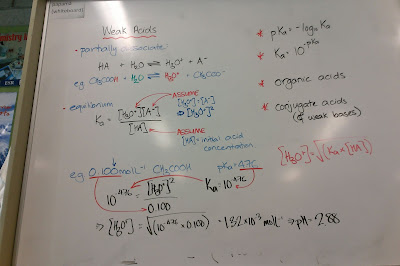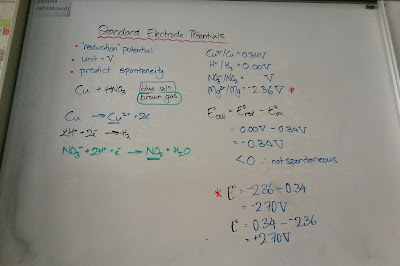STEP ONE: Write a balanced equation for what has happened at the equivalence point. This is not an equilibrium reaction, it is neutralisation.
STEP TWO: Use the n, c, V relationship to calculate the concentration of the conjugate being formed in the neutralisation reaction.
STEP THREE: Write an equation for the dissociation of the conjugate with water.
STEP FOUR: Use the weak base (or weak acid) calculations, as appropriate, to find the concentration of hydronium ions.
STEP FIVE: Use this concentration to calculate pH.

















































